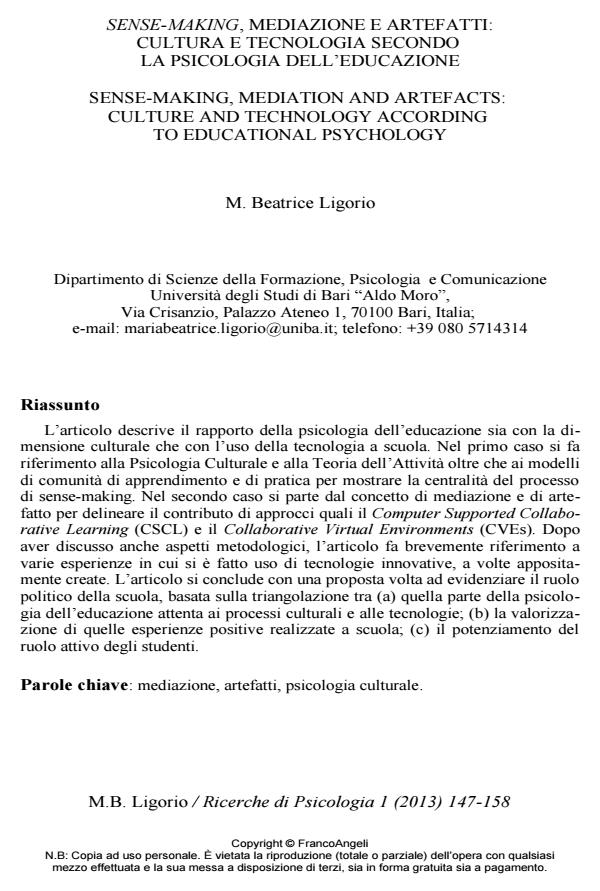Sense-making, mediation and artefacts: culture and technology according to educational psychology
Journal title RICERCHE DI PSICOLOGIA
Author/s Maria Beatrice Ligorio
Publishing Year 2013 Issue 2013/1
Language Italian Pages 12 P. 147-158 File size 203 KB
DOI 10.3280/RIP2013-01010
DOI is like a bar code for intellectual property: to have more infomation
click here
Below, you can see the article first page
If you want to buy this article in PDF format, you can do it, following the instructions to buy download credits

FrancoAngeli is member of Publishers International Linking Association, Inc (PILA), a not-for-profit association which run the CrossRef service enabling links to and from online scholarly content.
This article describes the relationship educational psychology maintains with both the cultural dimension and the use of technology at school. In this first case, the reference is to Cultural Psychology and to Activity Theory, alongside with the models of community of learners and practice. The sense-making process is central for such relationship. In the second case, the concepts of mediation and artifact are the starting points to define the contribution of the Computer Supported Collaborative Learning (CSCL) and the Collaborative Virtual Environments (CVEs) approaches. After discussing also methodological aspects, the article will shortly describe various experiences of use of innovative technologies, including technology purposely created. The article ends with a proposal meant to highlight the political role school should cover. Such proposal is based on the triangulation of: (a) that part of educational psychology attentive toward cultural processes and technology; (b) valuing those positive experiences already undertaken at school; (c) empowering students’ role.
Keywords: Mediation, artifacts, cultural psychology
Maria Beatrice Ligorio, Sense-making, mediazione e artefatti: cultura e tecnologia secondo la psicologia dell’educazione in "RICERCHE DI PSICOLOGIA " 1/2013, pp 147-158, DOI: 10.3280/RIP2013-01010